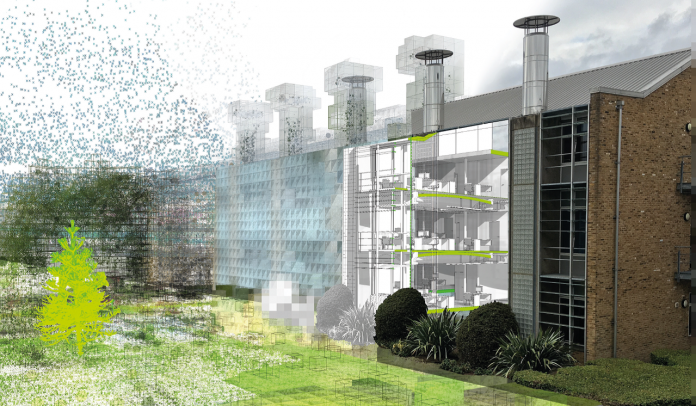Main author
ChristinaWoodardThe benefits of 3D CAD services for the buildings industry
Contents |
[edit] Introduction
Those involved in the design side of the building industry have long relied on drawings and models to help them visualise their work to its full extent. Unfortunately, simple drawings and even 2D computer-aided design (CAD) models cannot always provide them with the accuracy and speed that is needed in order to complete projects accurately on time. Or, even to find the required solutions to the challenging problems they might come across.
This is where 3D modelling comes into its own. Used by architects and other professionals in the buildings industry for many years, it offers the perfect way to improve the efficiency and also the aesthetics of designs they produce.
[edit] What is 3D modelling?
3D modelling is a process used to create a mathematical representation of any three-dimensional shape or object. It is a concept widely used in many industries. 3D models are created using software for visualising, simulating and rendering designs. These 3D models offer benefits both to the designer and client.
[edit] The benefits
The most obvious benefit of 3D CAD services to the construction industry is that, no matter how detailed and well-drawn architectural drawings are, it is still not possible to actually look at a building from all angles. Unfortunately, 2D drawings of this nature can only show so much detail while the rest is something that individuals need to be able to envisage for themselves.
A 3D model will allow people to look at a building from every angle, see all the detail and most importantly see any potential flaws that there are that are simply not as easy to visualise in a drawing.
Being able to see these flaws allows designers to tweak their designs to compensate for any issues that had not been noticed on paper.
3D also allows clients to visualise the end product far more efficiently than when faced with a drawing. It can help them understand the structure within the context of its surrounding space, the surrounding landscape can be added, textures visualised and so on and so on.
If a client isn’t sure of what they want, giving them this level of detail makes it easier for them to see what they are getting and in turn make better decisions about the project.
[edit] Conclusion
The use of 3D modelling in the construction industry has brought with it really significant benefits. Not only does it bring designs to life which can really help to make a deal, but it actually speeds up the design process. It also enables designers to consider different ideas and identify any issues before significant resources have been used.
Putting the pieces of a design puzzle together in this way offers designers an opportunity that can ultimately save them time and save their clients money.
[edit] Related articles on Designing Buildings Wiki
Featured articles and news
Latest Build UK Building Safety Regime explainer published
Key elements in one short, now updated document.
UKGBC launch the UK Climate Resilience Roadmap
First guidance of its kind on direct climate impacts for the built environment and how it can adapt.
CLC Health, Safety and Wellbeing Strategy 2025
Launched by the Minister for Industry to look at fatalities on site, improving mental health and other issues.
One of the most impressive Victorian architects. Book review.
Common Assessment Standard now with building safety
New CAS update now includes mandatory building safety questions.
RTPI leader to become new CIOB Chief Executive Officer
Dr Victoria Hills MRTPI, FICE to take over after Caroline Gumble’s departure.
Social and affordable housing, a long term plan for delivery
The “Delivering a Decade of Renewal for Social and Affordable Housing” strategy sets out future path.
A change to adoptive architecture
Effects of global weather warming on architectural detailing, material choice and human interaction.
The proposed publicly owned and backed subsidiary of Homes England, to facilitate new homes.
How big is the problem and what can we do to mitigate the effects?
Overheating guidance and tools for building designers
A number of cool guides to help with the heat.
The UK's Modern Industrial Strategy: A 10 year plan
Previous consultation criticism, current key elements and general support with some persisting reservations.
Building Safety Regulator reforms
New roles, new staff and a new fast track service pave the way for a single construction regulator.
Architectural Technologist CPDs and Communications
CIAT CPD… and how you can do it!
Cooling centres and cool spaces
Managing extreme heat in cities by directing the public to places for heat stress relief and water sources.
Winter gardens: A brief history and warm variations
Extending the season with glass in different forms and terms.
Restoring Great Yarmouth's Winter Gardens
Transforming one of the least sustainable constructions imaginable.
























